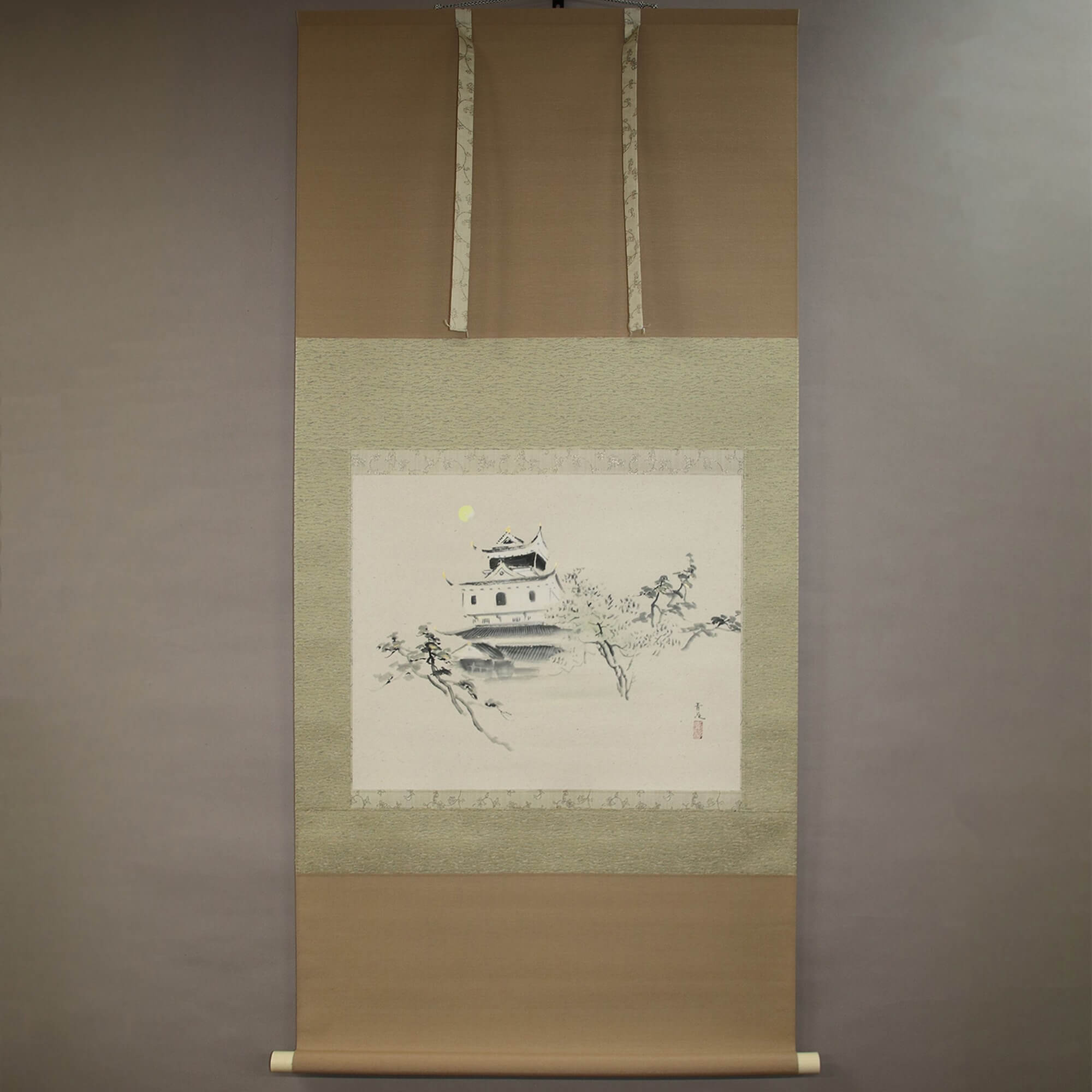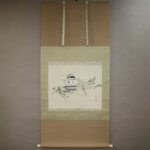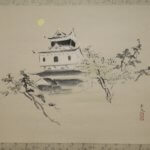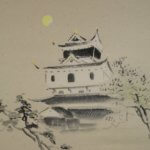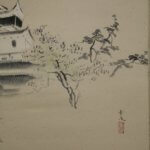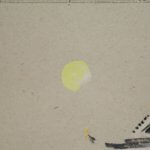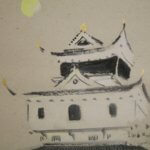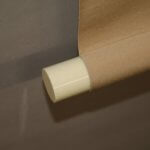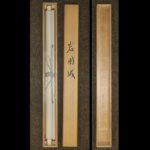Products Lineup
News / Blog
Other Menus
Kakejiku Hanging Scroll: Landscape Painting: Iwakuni Castle / Tatsumoto Seika - Iwakuni-jō
- Product ID
- 0273
- Name
- Tatsumoto Seika
- Profile
1935-
Born in Kyoto- Size
- 725mm x 1420mm
- Roller End Material
- Artificial ivory
- Material of the Work
- Japanese paper
- Stock Condition
- Sold out
- Description
The Iwakuni Castle was built in 1608 by Kikkawa Hiroie, the first lord of the Iwakuni clan, on the summit of Yokoyama, a naturally hazardous place surrounded by the meandering the Nishiki River. It was, however, demolished in 1615, just 7 years after its construction, under the order of the shogunate. The current castle tower was restored in 1962, while relocated about 50-meter south of the old main castle to allow a better view from the Kintai kyō bridge.
This work features the Iwakuni Castle by Tatsumoto Seika, who may have painted it from the Kintai kyō bridge. The depiction of the moon at the top of the picture tells that it is a night scene. One of Tatsumoto Seika’s greatness can be seen in capturing the characteristics of the Iwakuni Castle in a concise manner. The pine trees at the bottom of the screen are interesting as they seem to praise the castle’s beauty in the moonlight.

